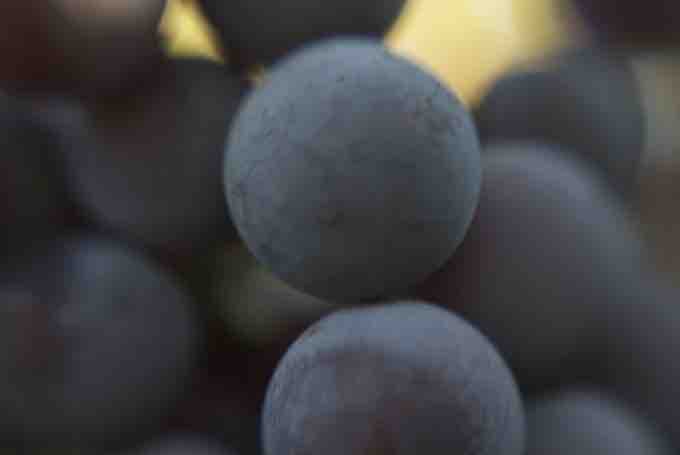Humans have been producing alcoholic beverages for thousands of years. The production of alcohol in these drinks is based primarily on yeast fermentation. Yeasts are eukaryotic microorganisms that ferment variety of sugars from different sources into the final products of carbon dioxide and alcohol.
Wine production
Wine is made from grapes or other fruit. The grapes are first cleaned of leaves and stems and the fruit is crushed into must that is ready for fermentation. The yeasts used for the fermentation grow a film on the fruit or in the environment. These wild strains play an important role in the final properties of the drink. However, cultivated strains of Saccharomyces cerevisiae are often added to improve the consistency of the final product. There are hundreds of commercially available yeast strains for wine fermentation.

Wine grapes
The white film that covers the grapes contains wild yeasts.
In the fermentation process, energy that is converted to heat is produced as well. It is important to keep the temperature in the fermentation vessel lower than 40ºC to keep the yeasts alive. To improve yeast growth, additional nutrients, like diammonium phosphate, are sometimes added in the fermentation step.
When making red wine, there is an additional fermentation step after alcoholic fermentation. Malic acid, naturally present in grape juice, can be converted to lactic acid by lactic acid bacteria naturally found in wineries or added artificially.
Beer production
Beer is the most consumed alcoholic beverage in the world. It is made most often of malted barley and malted wheat. Sometimes a mixture of starch sources can be used, such as rice. Unmalted maize can be added to the barley or wheat to lower cost. Potatoes, millet and other foods high in starch are used in different places in the world as the primary carbohydrate source.
The process of making beer is called brewing. It includes breaking the starch in the grains into a sugary liquid, called wort, and fermenting the sugars in the wort into alcohol and carbon dioxide by yeasts. Two main species are used in the fermentation process: Saccharomyces cerevisiae (top-fermenting, since it forms foam on top of the wort) and Saccharomyces uvarum (bottom-fermenting). Top-fermenting yeasts are used to produce ale, while bottom-fermenting produce lagers. The temperature used for top-fermenting (15-24ºC) leads to the production of a lot of esters and flavor products that give beer a fruity taste. Hops are added to introduce a bitter taste and to serve as a preservative.
Brewer's yeasts are very rich in essential minerals and B vitamins, with the exception of vitamin B12. Beer brewing in modern days is performed by added pure cultures of the desired yeast species to the wort. Additional yeasts species that are used in making beer are Dekkera/Brettanomyces. After the fermentation is finished, the beer is cleared of the yeasts by precipitation or with the use of clearing additives.
Other types of alcohol beverages are made by the fermentation activity of microorganisms as well. A few examples are sake (uses the fungus Aspergillus oryzae to facilitate starch fermentation from rice), brandy, whiskey (both are distilled alcohol), and other alcohol beverages with higher percentage of alcohol compared to wine and beer.